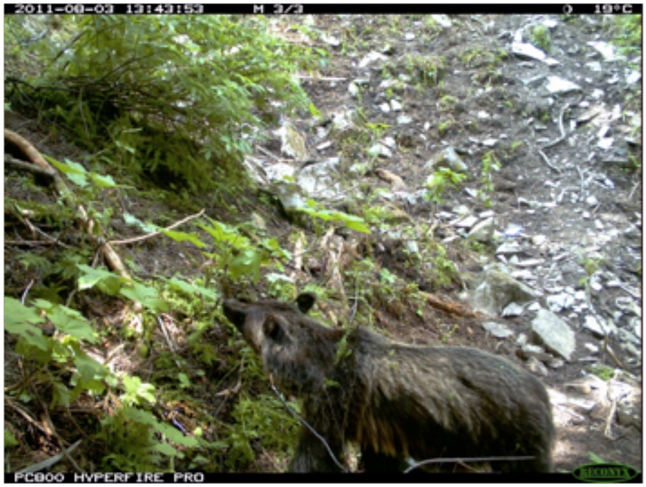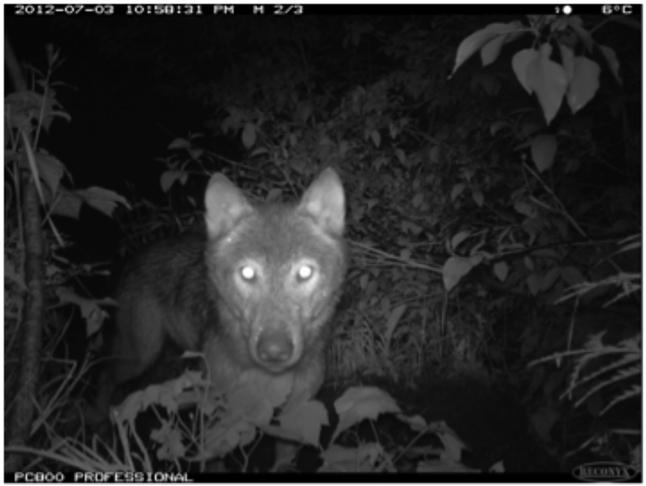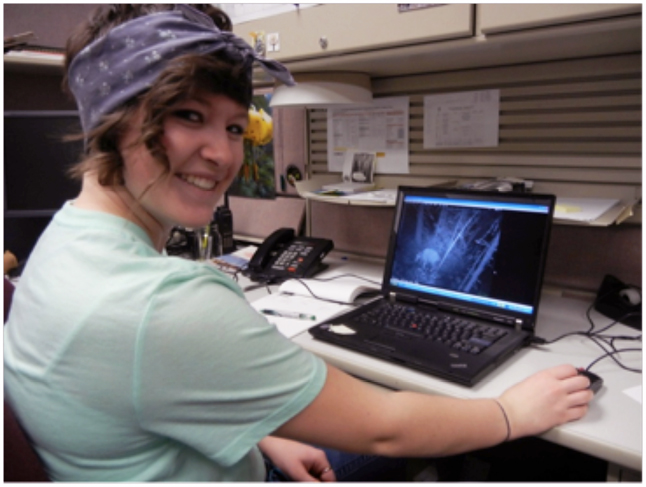
By Hanna Thomson
Who would have thought that part of my school work this year would include sorting through thousands of photos of mountain goats? I am a grade 12 student at the RSS and am currently taking a Work Experience course. It involves going into a workplace and completing 90 hours of volunteer work. I was fortunate enough to receive an opportunity to complete some of my hours at Parks Canada, working on one of their wildlife studies.
I was working on a mountain goat study that has been on-going for almost two years. It aims to reduce the amount of mountain goat activity and related deaths along the Trans-Canada highway through Rogers Pass and Mount Revelstoke National Park. Parks installed motion sensor wildlife cameras along the popular goat trails leading to and from the highway. Eventually, they plan to reduce goat travel to the highway, but first they first needed to know how many goats were accessing it and their pattern of movement. As it turns out, the goats enjoy coming to the highway mainly to lick the salt and minerals off the road deposited during the winter; but also because they simply need to cross it to access the opposite side of the valley.
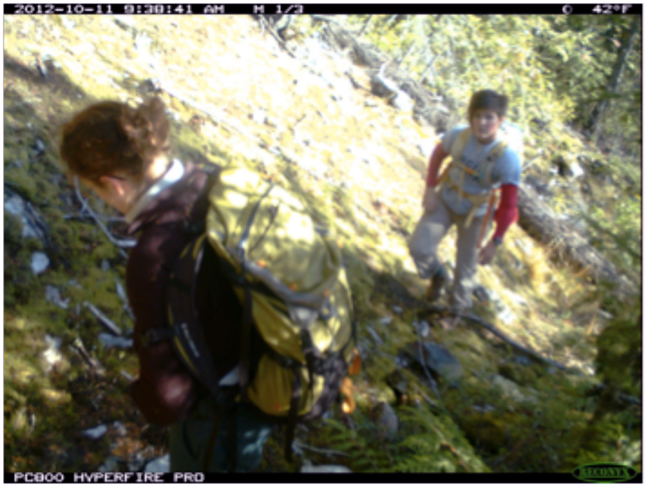
My job was to sort through the many photos collected and record sightings based on when the goats were seen, how long they were down at the highway, how many goats were in a group, and which direction they were headed. This will help to determine which areas have the most goat activity and what the goat behaviour is in that area, in order to modify the goat behaviour and reduce goat-human interaction.
After sifting through thousands of photos I began to develop an understanding about mountain goat behavior and interaction. They are quite comical animals to watch running about frame by frame. They tend to be very social with all of the other goats in the group. Goats will travel in groups anywhere from just one up to about 15. Quite often the large groups resemble something similar to the social interactions seen with families of elephants. The older goats often have long shaggy hair, which can appear quite patchy at certain times of year. The little ones however, look like lambs. They bound around the group trying to cuddle up against someone or other; their snow white fur looks like the softest fabric.
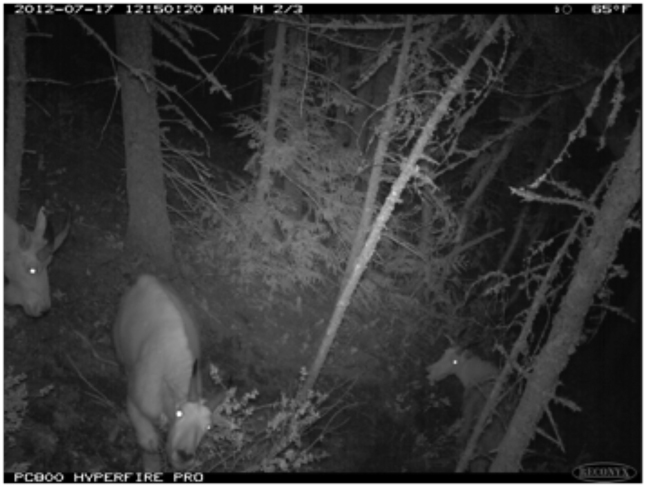
I would have to say that the most entertaining of the sets of photos to look at were the ones from the salt licks. Once a group discovered a salt lick they could spend hours there, racking up to 2500 photos in one visit. It wasn’t too tedious looking through that many photos though because the whole time the goats would be competing for the lick.
There appeared to be a pecking order, the largest buck or nanny would have dominance over it. Then the mature kids would dual over it whenever there was an opportunity that it was free for use. Finally, if the youngsters were off head-butting each other, the kids would dash in for a quick lick before being knocked off again.
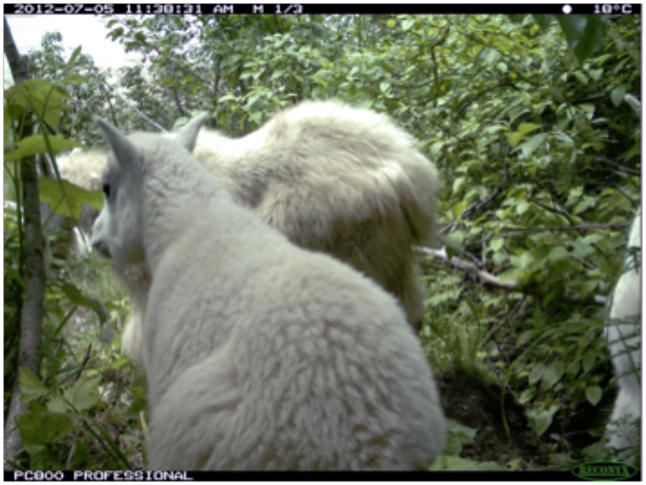
Not only did I see hundreds of goats but on occasion other animals would pass by unaware they were captured on camera. Amongst the mountain goats there were black bears, coyotes and grizzly bears. These animals would never remain in front of the camera long enough for it to get more then 5 photos. Nonetheless it was always exciting to see another animal out in its habitat unaware of the camera.
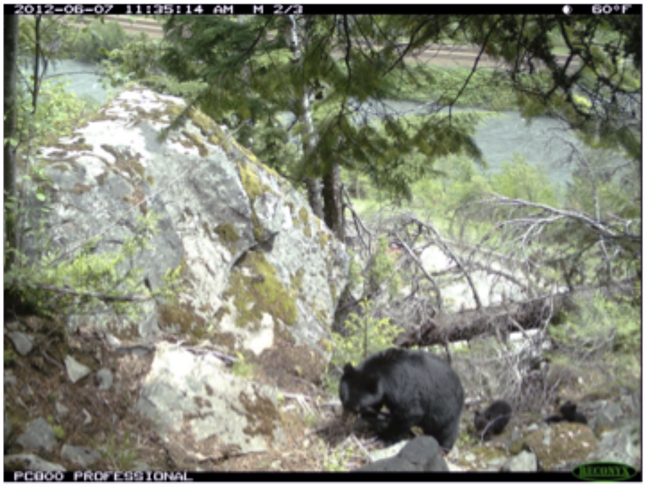
I also learned a bit of background about the National Parks. Parks Canada
was the world’s first national park service, founded in May of 1911. Its aim is to protect Canada’s natural environment while educating too. Today there are 43 National Parks across Canada, as well as 167 national historic sites. On top of this there are many public education programs too.
Through this great opportunity I have certainly gathered a deeper insight into human-animal interactions along with an uncountable amount of tidbits.
Here are some of the other images Hanna enjoyed:
